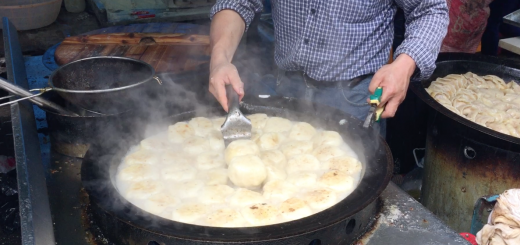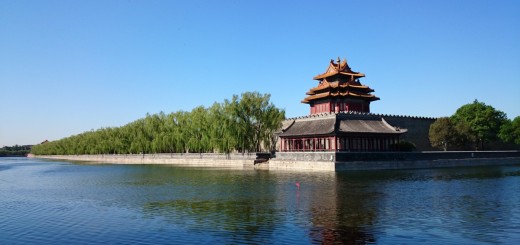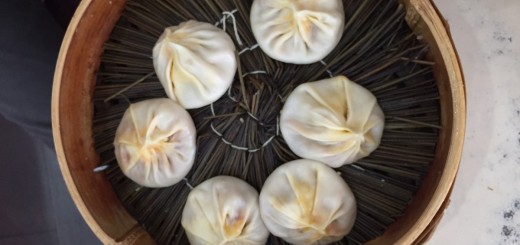Hunan: chilies, pickled things, wontons & late night meals
We spent our last week in Hunan province between the capital, Changsha and a smaller county, Fenghuang home to Miao and Tujia ethnic minorities. We have been keeping up with our research by eating and deciphering our meals, attending “farmers markets” (which seem to be the only kinds of markets here), journaling, reading, and inquiring with Ze about Chinese culture. After roughing it out being sick as well as homesick from her sweet Ruru, Ze has decided to return home. We thank her for all her hard work planning, translating, introducing us to her wonderful family, making sense of and teaching us so much about Chinese culture. She has helped and allowed us to do much more meaningful work, we appreciate her endlessly! Upon leaving, Ze set us up with tickets for the rest of our travels, got me a Chinese cellphone number, and created an online chat group between us and Chinese-English speaking friends of hers in all different time zones. Amazing. And we are feeling confident about our last two weeks, excited to see what we will find while lost, what we will understand with minimal comprehension of mandarin and what we can glean about Chinese culture by observation. The night before Ze left we did as the locals would and enjoyed a late night meal eaten outside amongst lively crowds all eating spicy food. The next morning we spent our last meal together at a small wonton shop across the street from our rented apartment.
The day before we were slurping noodles in the same shop when our waiter advised that we should try his wontons too, as travelers and locals alike return to his shop to enjoy these small soupy treasures. Already full we quickly said yes and we came back for more for breakfast the next day. Inside the slippery thin wheat wrappers was finely ground fatty pork. These wontons had a special aroma that filled your mouth with a steaming tea fragrance. This was most likely an expert use of white pepper and maybe a little 5 spice together with cilantro. The wontons melted in my mouth, it was like eating/drinking At the same time. We took turns spooning the dumplings, all floating in a rich pork broth. We never asked but I would assume that the wontons are made with a secret recipe…stomachs full we hailed a cab right outside, said goodbye to a dear friend and started our journey to Fenghuang.
Sour and spicy flavors: We were warned that Hunan would have the hottest food of our whole trip. The food was certainly spicy but now that we have been enjoying Sichuan for a few days I’d say it’s probably a tie if not two completely different sensations. Hunanese cuisine is notable for its liberal use of chili peppers as part of savory, sour and spicy style. While Hunan is considered “la”, which is spicy, Sichuan takes it a step further with the peppercorn that promotes a numbing, tingling effect called “mala”. Pickled things are a popular way of making a spicy and sour flavor. We had pickled longbeans stirfried with chilies and pork multiple times. The beans were cut into quarter inch bits salty tangy and army green from their fermentation.
Hunan, was surprisingly enough, the first place we ate rice in China. Not because this was the first place to have good rice but because we needed it to help relieve our mouths throughout most meals. This is a culture of people who use food for specific health/bodily functions. People pay close attention to the amount of heat, yang and cold, yin inside their bodies, adjusting it with their diet. To avoid having too much humidity in their body in this super humid climate, the population turns to chilies. They believe that the humidity is removed from their bodies through the opening of their pores when they consume hot food. Likewise, in the wintertime they eat hot pot, a spicy soup broth that you dip and cook meat, vegetables, tofu, and fungi into, believed to warm the blood.
changsha vegetable/ farmers market: The word Hunan literally means south of the lake, specifically south of the Dongting lake. So, although Hunan is technically landlocked, it’s still booming with seafood. Dongting lake’s goods are dispersed along the province via the xiangjiang river. This abundance of Greg water seafood is embodied at the local markets in Changsha. One market sported all different types of fish, crawfish, eels, turtles and frogs. One man sat at a work bench nailing the heads of eels to a board and running a knife down their bodies to skin them alive. The Chinese do love their fresh food. Frogs piled up jumping around in net bags and fish swam around in crowded, over flowing tanks. When someone buys a fish the vendor usually kills and cleans it with a cleaver in front of the customer. The market also carried different kinds of tofu, fermented and spiced, fried and flattened. We bought some exotic animal parts (exotic to us) including some small intestine and a pigs tail. It is more than obvious at any market we visit: nothing is wasted. And it’s more than simply being conservative, once these seemingly intimidating items are cooked in the local style, with hot peppers and chili oil, garlic and cilantro tthe offals and oddities are granted a new and tasty life.




